Editor’s Key Takeaways: Master HDR Night Photography with 11 Simple Tips

In this blog post, the author presents 11 tips for producing stunning HDR night photography. Maintaining that these are techniques that they have personally perfected, the author delves into tips for consistently sharp images, getting the best colors, and achieving a wow factor in your photographs.
- Use a Tripod: Keeps your photos aligned contributing to sharpness.
- Shoot with a Remote Shutter Release: Lessens camera instability and ensures sharpness.
- Bracket your shots: Don’t be afraid of over-bracketing.
- Manual Focus: Ensures perfect sharpness.
- Shoot during Blue Hour: Enhances colors in HDR night photography.
- Long Exposures: Achieves dreamlike shots.
- Include Lights in Frame: Can lead to cool effects.
- Photograph in Busy Places: Leads to ghost-like image effects.
- High ISO when Necessary: To achieve desired brightness amidst low light.
- Basic Merging in a Simple Post-Processing Program: Programs like Lightroom are suggested.
- Advanced HDR Night Looks with specific HDR processing software: Photomatix, Aurora HDR are recommended for advanced effects.
Introduction
In this article, I’m going to share 11 easy tips for gorgeous HDR night photography.
In fact, these are the exact techniques I use in my own HDR photos, which I’ve perfected over years of shooting. So if you’re looking for hands-on, experience-based tips, you’ve come to the right place.

Here’s what you’re going to learn:
- The secret to getting sharp HDR night photos, consistently
- When to shoot for the best colors
- My favorite way to get a jaw-dropping, how-did-you-take-that effect
- Much, much more!
Are you ready to become a night HDR master?
Let’s get started.
HDR Night Photography Tips:
1. Use a Tripod to Keep Your Photos Aligned (and Sharp)
While capturing beautiful HDR night photography isn’t difficult, it is a pretty gear-intensive genre of photography.
And out of all the pieces of HDR gear, a tripod is the most critical.
For two reasons:
First, you do HDR photography by capturing several shots of the same scene, then blending them in post-production.
But if you’ve shot without a tripod, your HDR images won’t be aligned. One image might be taken slightly to the left of your subject, the other slightly to the right, etc.
And this can cause serious problems when you bring the images into an editing program and try to merge them.
Can editing programs handle a little bit of image misalignment?
Yes, they can. So if you’re in a pinch, you can try handholding, and merging algorithms might be able to work through it.
But it’s good practice to always keep your images perfectly aligned. This ensures you always get the shot you’ve after, and that you don’t have to spend hours in Photoshop fixing small errors in your image.
Plus, there’s the second reason you need a tripod for HDR night photography:
You’re shooting in near darkness. Which means that you’ll be using long shutter speeds.
(Expect a starting shutter speed of around one second. This will increase as the sky gets darker.)
As you’re probably aware, handholding and long shutter speeds really don’t mix – they’re a recipe for ultra-blurry, unusable images.
But pop your camera on a sturdy tripod, and you’ll capture more sharp images than you can handle!

2. Always Shoot With a Remote Shutter Release
Here’s your second piece of critical HDR night photography gear:
A remote shutter release.
This allows you to activate your camera’s shutter button without actually touching it.
And it’s important for one huge reason:
It’ll cut down on any remaining camera shake.
You see, while a tripod will prevent shake (and the resulting blur) due to handholding, there’s one thing that it can’t stop:
Vibrations from pressing the shutter button.
When your finger taps that button, it’ll cause your camera to move ever-so-slightly.
And you might end up with a blurry shot.
A remote release, however, will prevent you from ever having to touch your camera’s shutter button.
You just frame up your photo, dial in your camera settings, and hit the remote release button.
And your images will turn out tack-sharp!
Also Read: Best Camera Settings for Night Photography
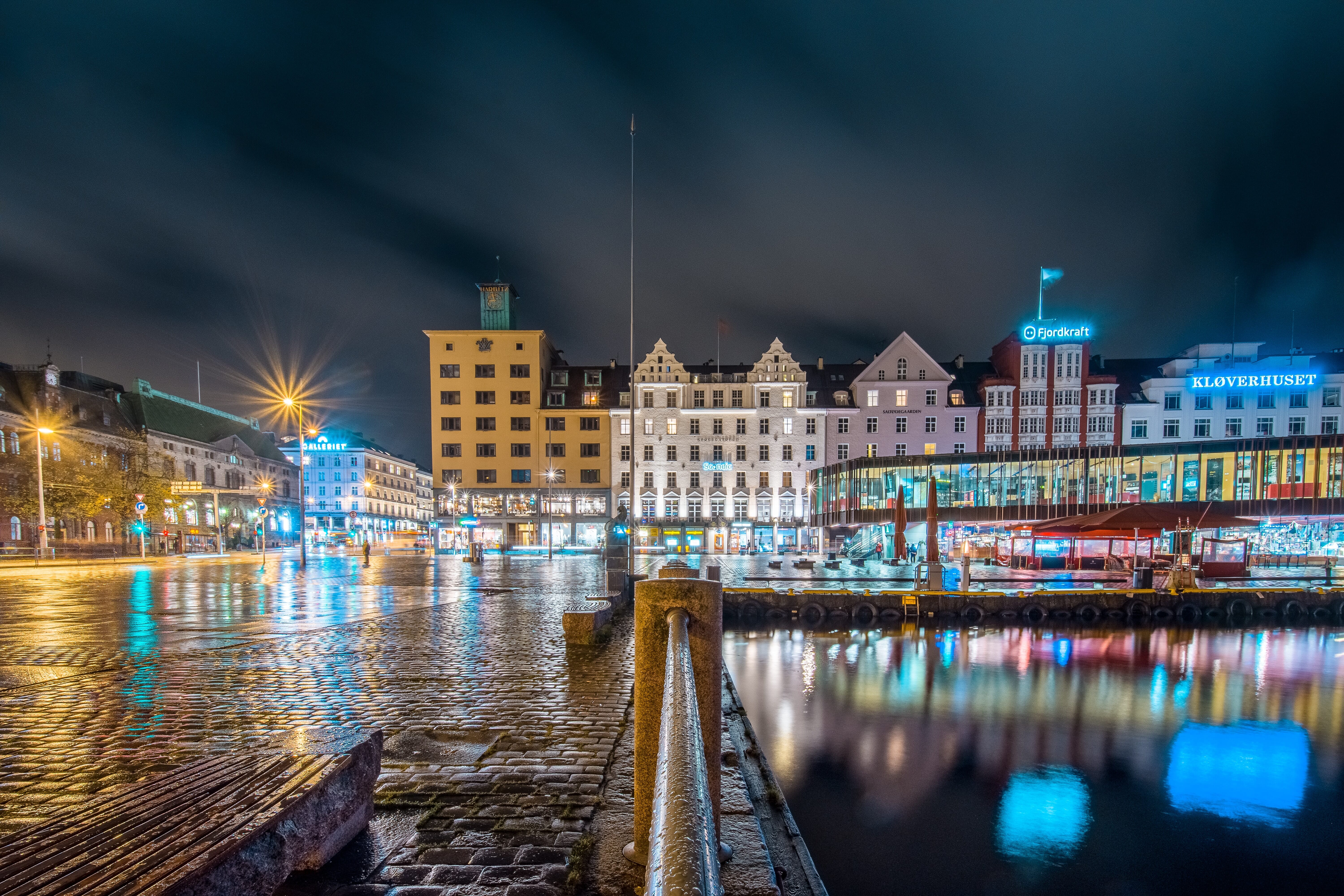
Now, remote releases don’t cost much, though make sure you buy a release that works with your camera model.
If you’d prefer not to pay for a remote release, you do have the option of using your camera’s self-timer – either two seconds or ten seconds, depending on the sturdiness of your tripod.
Personally, I don’t like the self-timer, because it’s annoying to wait while it counts down.
But if you don’t mind the delay, then by all means, go for it!
3. Bracket Your Shots (and Don’t Be Afraid to Over-Bracket)
Bracket, bracket, bracket.
That’s the mantra of all HDR night photographers.
If you’ve done HDR photography before, you’ll know that exposure bracketing is a fundamental part of the HDR process. It’s how you get such an impressive high dynamic range look: You take one photo that exposes for the highlights, one photo that exposes for the midtones, and one photo that exposes for the shadows. Then you merge these multiple exposures for one beautifully-detailed image.
(To do simple exposure bracketing, I recommend putting your camera in Manual mode or one of the Semi-automatic modes, such as Aperture Priority. Then you can adjust your shutter speed or your exposure compensation for a simple series of bracketed images.)
But while HDR night photography does require bracketing…
…it can get a little tricky, depending on the scene you’re shooting and the effect you’re after.

You see, if you’re shooting cityscapes at night – a very common HDR night subject – then you’ll have deep shadows, not many midtones, and a mix of bright highlights (from the city lights).
So a simple bracket might not be enough. Underexposing might still result in blown-out lights, because lights are, well, bright. And overexposing might not address all of the shadow detail, because shadows at night are dark.
Instead, I’d recommend you over-bracket.
So instead of just capturing three images, aim for five, or even seven. And make sure that you have at least one image that gives detailed shadows, and one image that gives detailed lights.
Make sense?
4. Use Manual Focus for Perfect Sharpness
Focusing at night is hard.
And focusing on the same subject at night while shooting a series of bracketed images is next to impossible.
You’re bound to end up with blurry images, a lot of frustration, or both.
Fortunately, there’s a simple solution:
Turn off your lens’s autofocus. Switch over to manual focus instead.
That way, your lens won’t hunt for focus, and you don’t have to worry about the focusing shifting between shots.
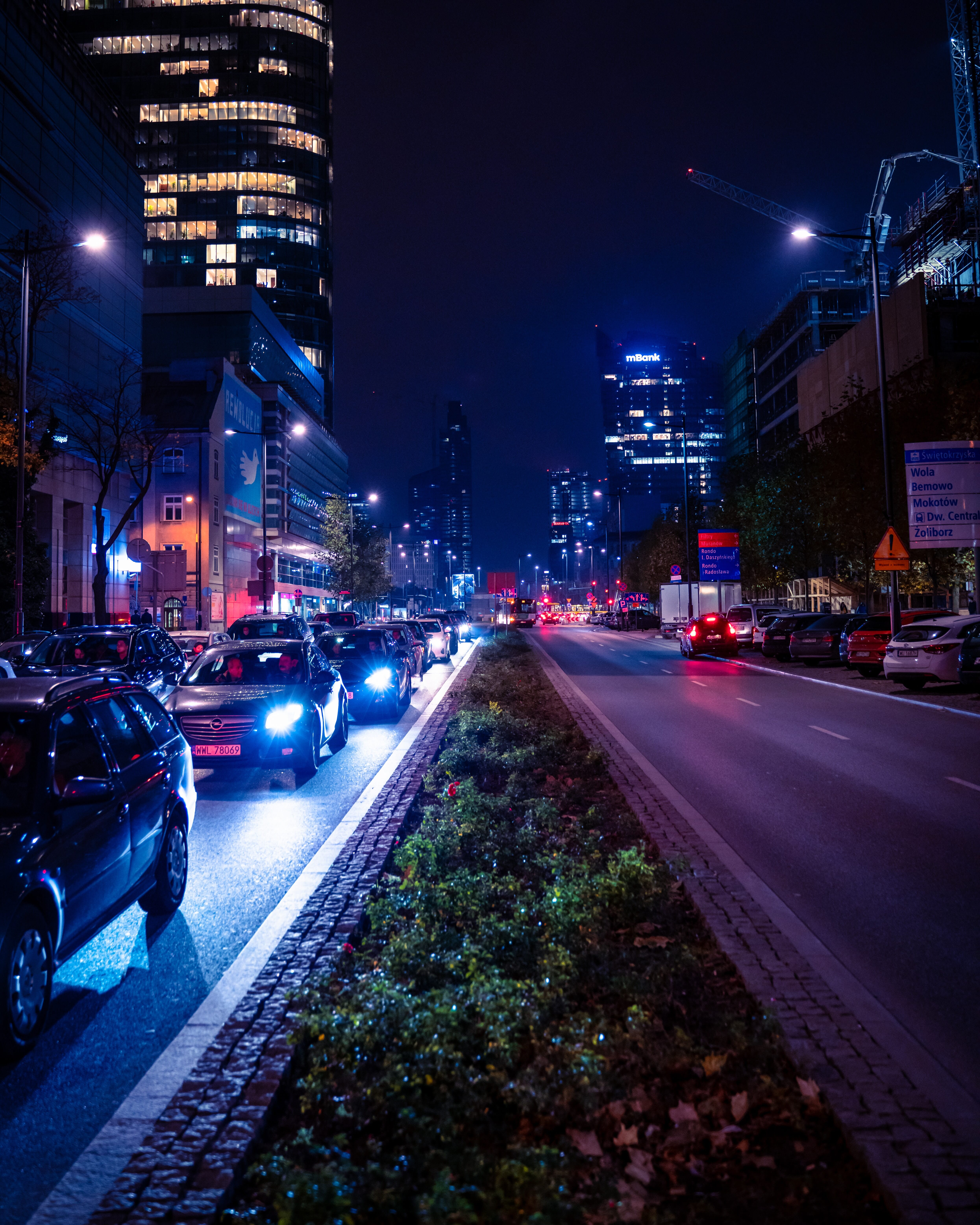
Before taking a series of bracketed shots, I’d also recommend you take a test shot. Zoom in on your camera’s LCD and check the focus; make sure your subject is tack-sharp where you need it to be.
Also, if you’re struggling to focus manually, I’d recommend turning on your camera’s Live View, zooming in, and carefully aligning the plane of focus with your subject.
Related Posts
5. Shoot During the Blue Hour for Colorful HDR Night Photography
Have you ever seen HDR night photos that have tons of color in the sky?
Is that an effect you’d like to replicate?
Well, here’s the secret (and it’s really, really simple…):
Shoot during the blue hour, rather than late at night.
The blue hour refers to the hour or so right after sunset (and the hour or so right before sunrise). The world is dark enough to get nighttime images. But there’s still plenty of color in the sky, which means you can get photos like this:
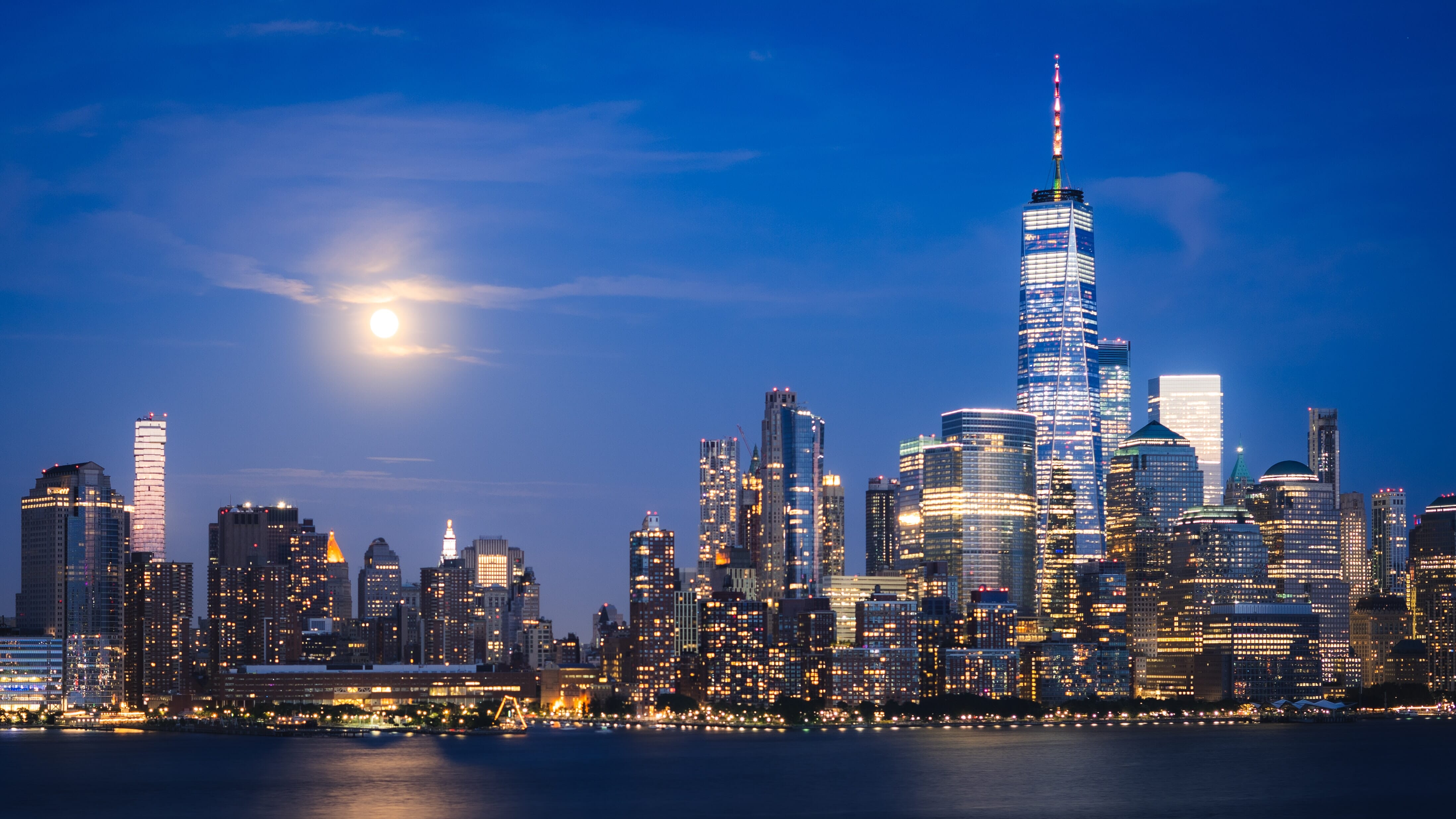
And this:
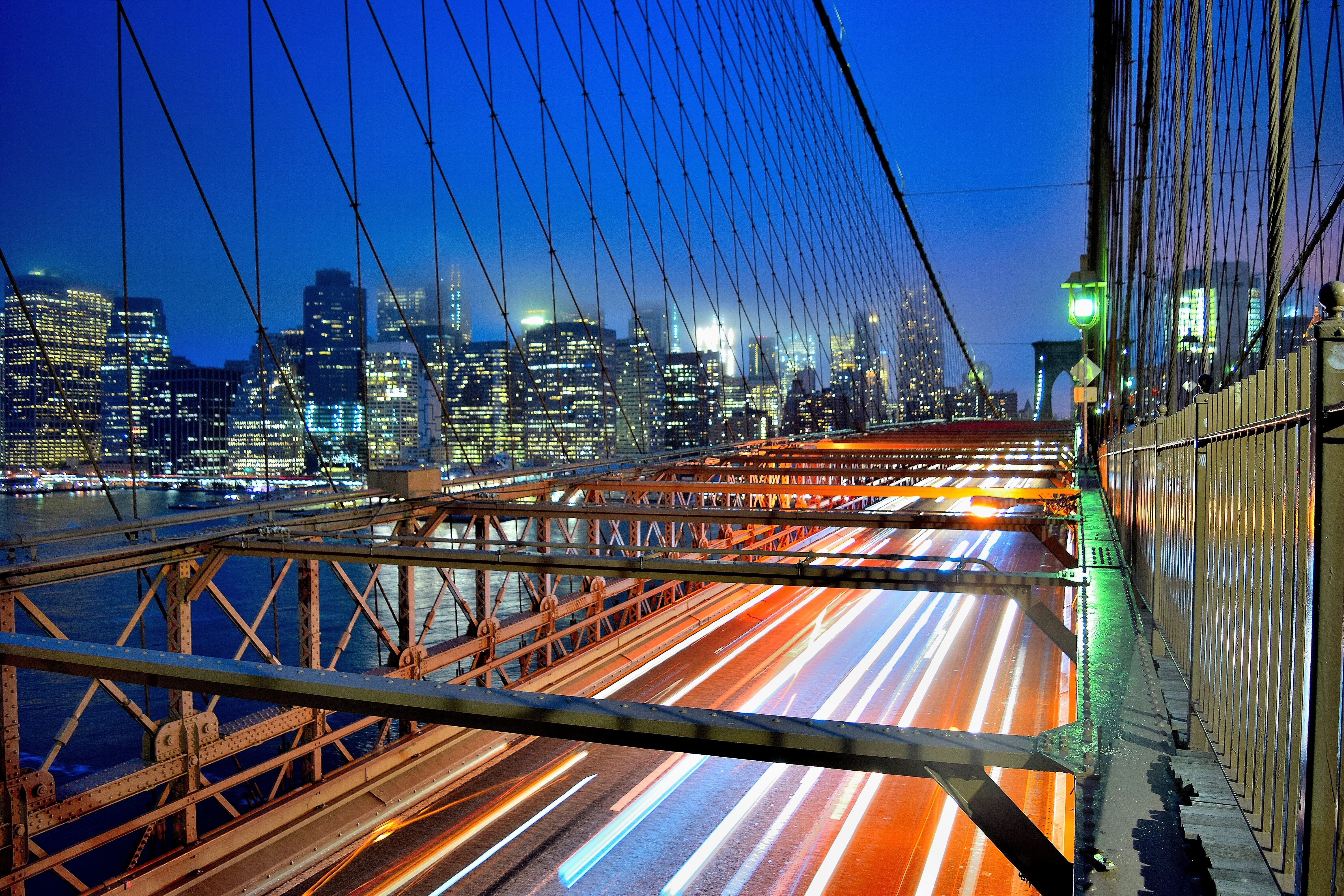
It works especially well if you’ve just had a gorgeous, cotton-candy sunset.
Then you can get the night HDR aesthetic – but with beautiful colors in the sky.
6. Try Long Exposures for Dreamy Shots
If you’re after artistic night HDRs, then here’s a fun technique you can try:
You see, a long exposure will allow you to create an ethereal effect. And it’ll let you drag out any clouds in the sky, for a delightfully “stretchy” look:

And it’ll even give you the opportunity to include light trails in your final image, like this:

Depending on what – and when – you’re shooting, you may need a neutral density filter to really lengthen that exposure.
But if your subject is sufficiently dark, you’ll be able to shoot exposures for a minute or more without filters of any kind.
Now, I love long exposure night photography. You can use it to create some of the most stunning effects imaginable.
But it often does require a bit of extra post-processing work.
Why?
When you take a series of bracketed long exposure shots, each image will have slightly different cloud formations, slightly different light trails, and so on.
And this can cause problems for basic HDR merging software, such as Lightroom.
You may need to head into Photoshop and selectively mask out certain parts of each shot to create the effect you’re after.
But if you’re willing to put in the time, it’s absolutely worth it!
7. Include Lights in the Frame for Cool Effects
Street lights are one of my absolute favorite night HDR subjects.
Because they give your photos that extra bit of magic, like this:
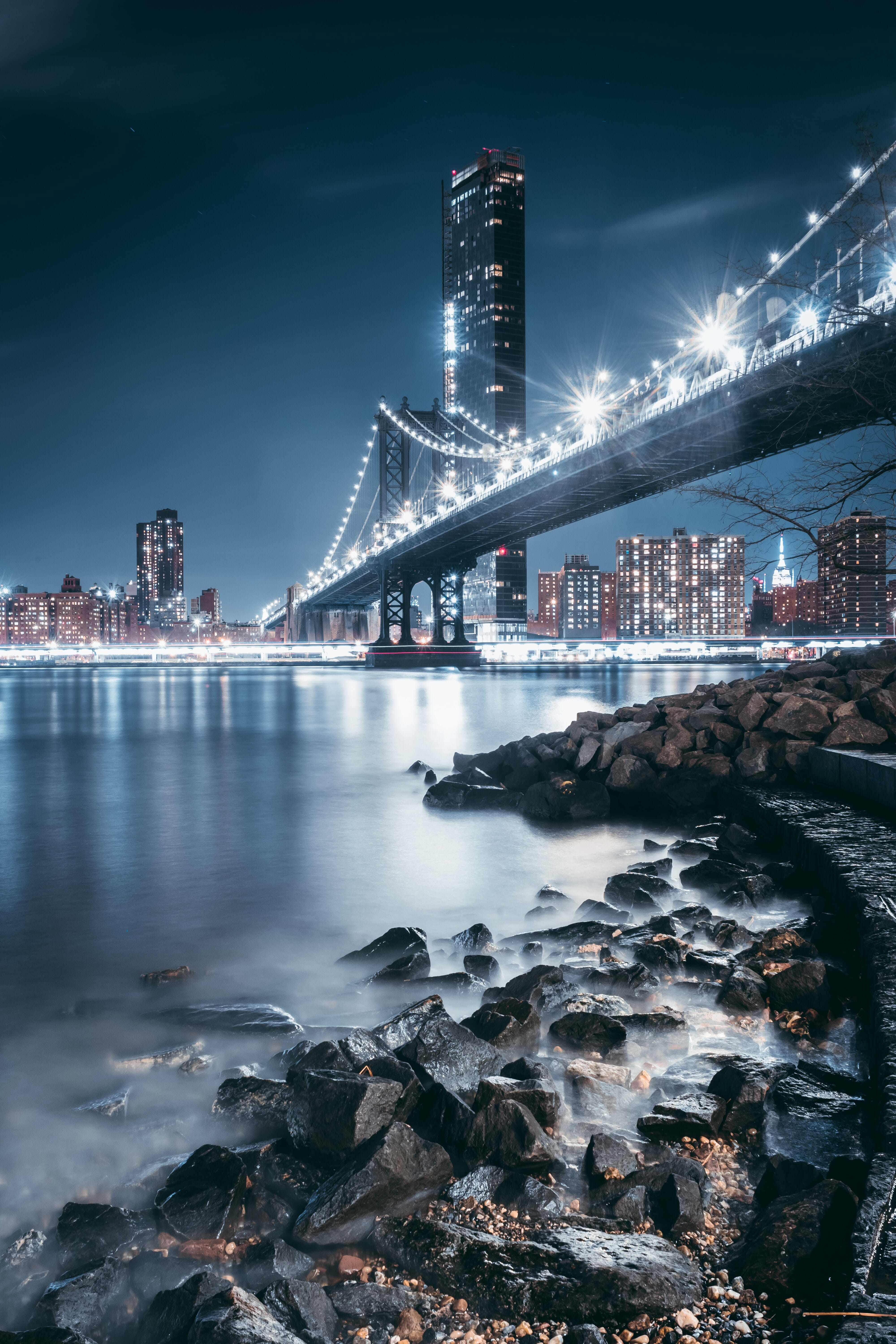
Honestly, whenever you see a cool streetlight, I highly recommend you include it in your composition. You can do wide shots that include the streetlight in the larger scene, or you can use the streetlight as your main subject.
But make sure you bracket carefully, as I discussed above. While a blown-out streetlight can look cool, it’s not always the effect that you want. In fact, I’d recommend you always get one shot exposing for the streetlights, just in case.
Then, if you decide not to use it, you can leave it out of your HDR merge.
And if you do need it, you always have it on hand.
8. Photograph in Busy Places for Ghost-Like Images
HDR night photography tends to involve long exposures.
So if you photograph scenes with people, you’ll often end up with ghost-like blurs, not detailed faces.
And when you merge together several of these images (for a final HDR result), you’ll get a weird, ghostly, overlapping effect.
Some HDR photographers don’t like this. They try to minimize these movement effects as much as possible by using faster shutter speeds or by slowing down the shutter speed until you can’t see any movement at all.
But there’s another option:
You can embrace the ghosts!
Specifically, you can head to busy places, such as city squares, streets, or even popular natural locations.
And you can shoot long exposures that show plenty of ghosts.

Then, when you bring your bracketed photos into an editing program, you can do a simple merge and see what you get.
If you don’t like the result – because the composite image looks too jittery – you can always open up the images in Photoshop and mask out the ghosts from all but one of the images.
That way, you can get ghost-like figures – but with an element of coherency.
Here’s a bonus tip:
Some of the best night HDRs are shot in locations with a mix of movement and motionlessness.
For instance, if you photograph people admiring a statue, some of the onlookers will be blurry (because they’ll come and go), whereas others will be sharp (because they’re standing still). And the statue itself will be tack-sharp, because it’s not moving at all.
That contrast – between blurry and sharp, solid and ghost-like – is a great way to create jaw-dropping photos!
9. Use a High ISO When Necessary
The higher your ISO, the noisier your photos will become.
(Noise doesn’t look good; it’s a detail-killer, and it should pretty much always be avoided.)
That said…
If you need a faster shutter speed for your night photos, you’ll have to increase your ISO.
Why might a faster shutter speed be necessary?
- You might want to capture an HDR shot that includes a moving subject, such as a person walking down a street. (Note that the technique here is tricky, because you’ll need to take several standard HDR shots, then make sure to blend in the moving subject in Photoshop later.)
- You might want certain moving elements to stay visible in the final shot, such as waving flags. (Keep your shutter speed too long, and a flag will turn invisible.)
- You might be photographing the sky and want to avoid blurry stars.
- You might be photographing a very dark scene, such as a landscape after blue hour, and you want to keep the shutter speed below 10 minutes.
In any case, to get the shot you’re after, you’ll need to raise your ISO.
Fortunately, most cameras can handle ISOs in the 400-1600 range without issue. Around ISO 1600, you might start to notice a bit of noise creeping in, but you can often deal with this during post-processing.
It’s after ISO 1600 that you need to be careful.
On most cameras, ISO 3200 or ISO 6400 is when image quality really starts to deteriorate.
So here’s what I recommend you do:
Start at ISO 100 (or thereabouts – just make sure it’s your camera’s base ISO).
Then raise it only as required.
Once you get to ISO 1600, be very hesitant about going further. If your shot absolutely requires it, then sure, go to ISO 3200, ISO 6400, and even beyond.
But recognize the limitations of this approach; your shots will become grainy, lack dynamic range, and lose detail.
One helpful tip is to test out your camera in advance. Take a series of shots, going from ISO 100 all the way to your camera’s highest ISO value.
Then look at the shots on your monitor, and ask yourself:
Which of these ISO levels is usable?
It’s going to depend somewhat on personal preference, and on the style of photography you plan to do.
(Black and white HDR shots, for example, can handle more noise for a “noir” look.)
But zoom in, check detail, and make sure you know what you’re getting from your camera’s high ISOs.
That way, you can make informed decisions when out shooting!
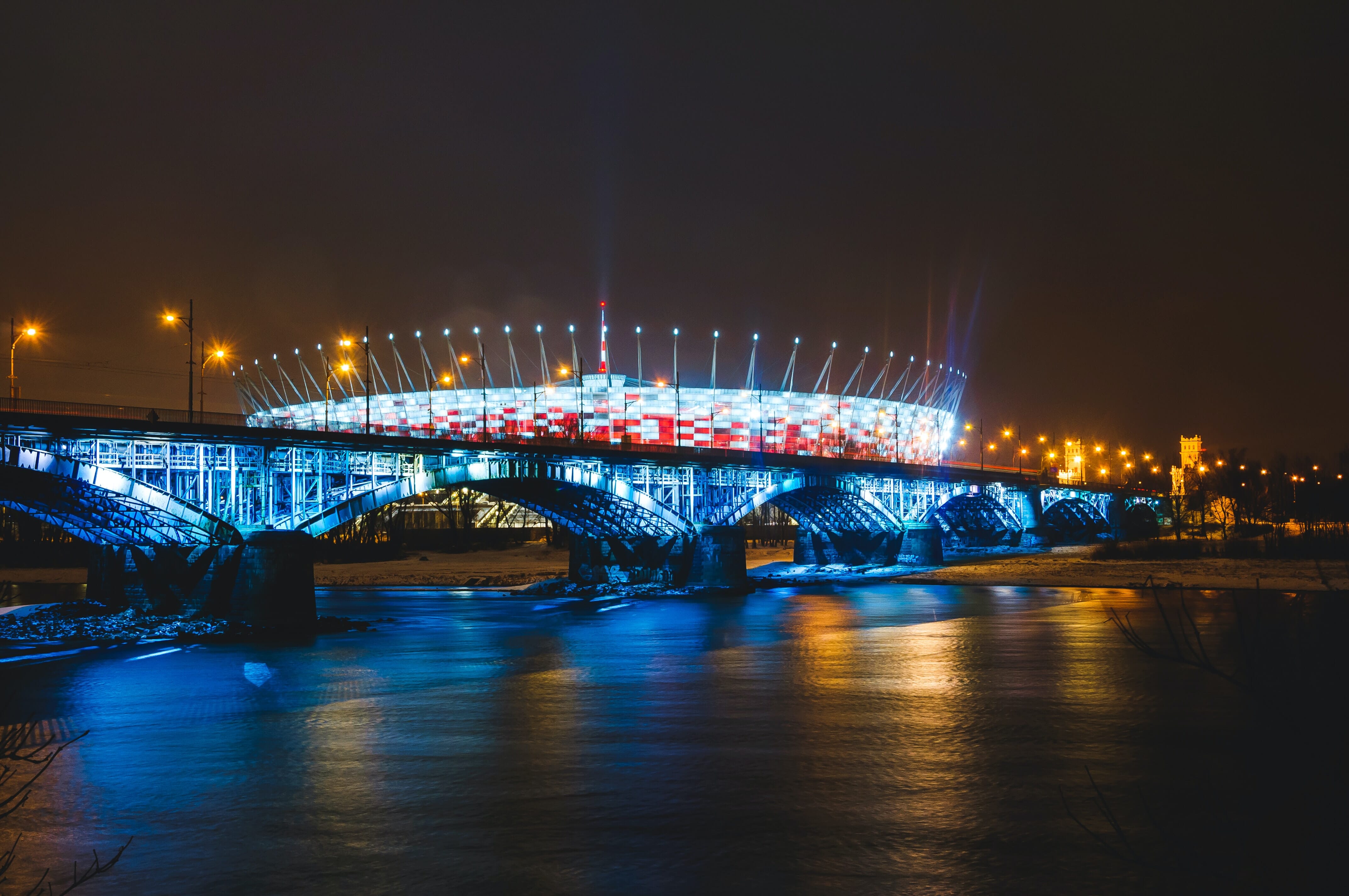
10. Do Basic Merging in a Simple Post-Processing Program (Such as Lightroom)
Once you’ve captured a series of bracketed images, you’ll need to bring them into a post-processing program for editing.
Now, some post-processing programs offer basic HDR edits. Lightroom, for instance, can blend together several shots, can align them, and will give you a decent-looking, natural result.
But more advanced programs (e.g., Photoshop), as well as dedicated HDR editors such as Aurora HDR and Photomatix, will let you take your HDR editing further (and create all sorts of cool effects, as I’ll explain in the next section).
In this tip, I’d like to concentrate on basic HDR edits.
These consist of taking several images, merging them together, making sure everything looks natural, then editing for a final result.
Here’s how to do it in Lightroom:
First, open up your bracketed HDR shots.
Select every image, then right-click and choose Photo Merge>HDR.
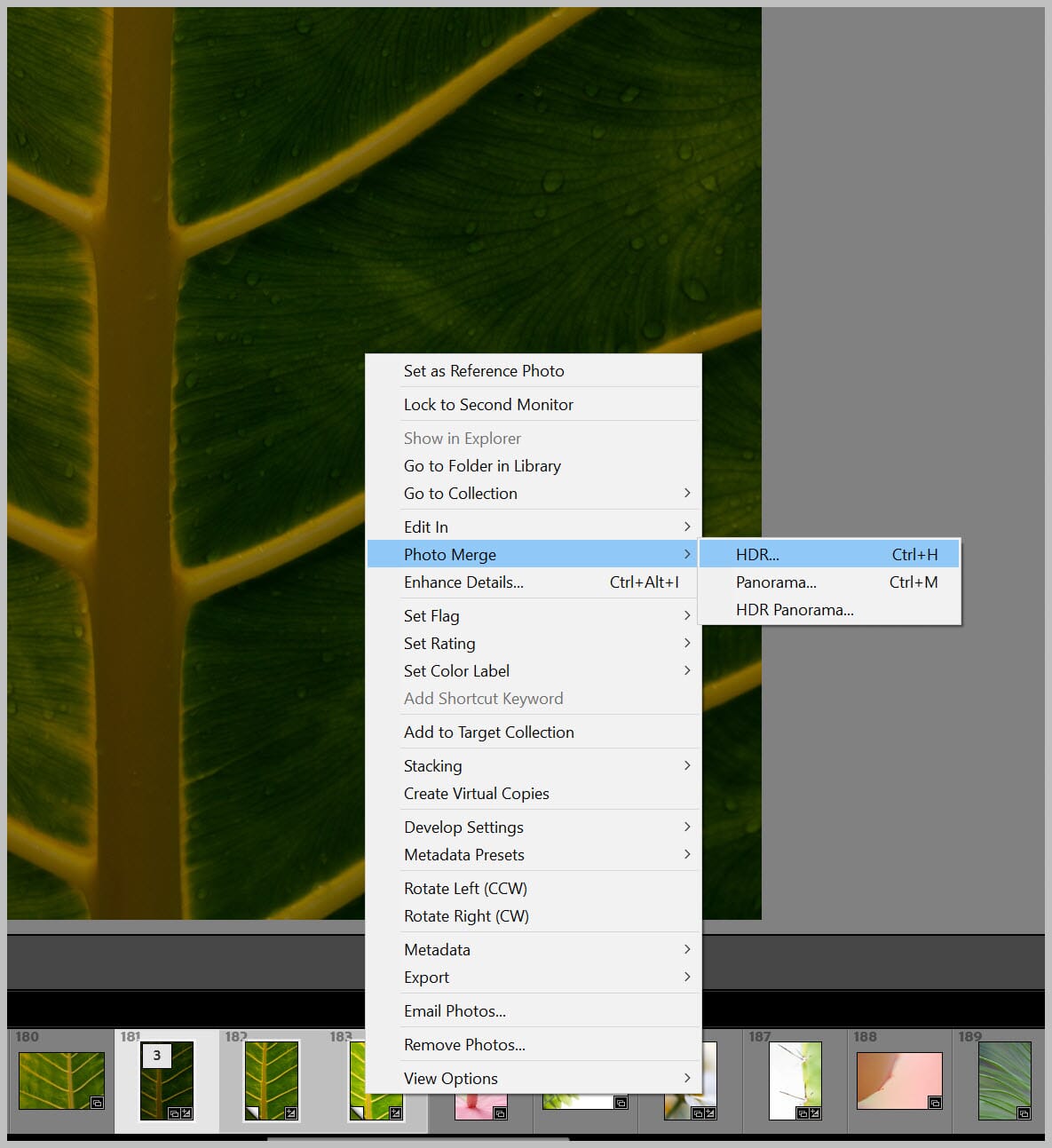
You should see this simple dialog box:
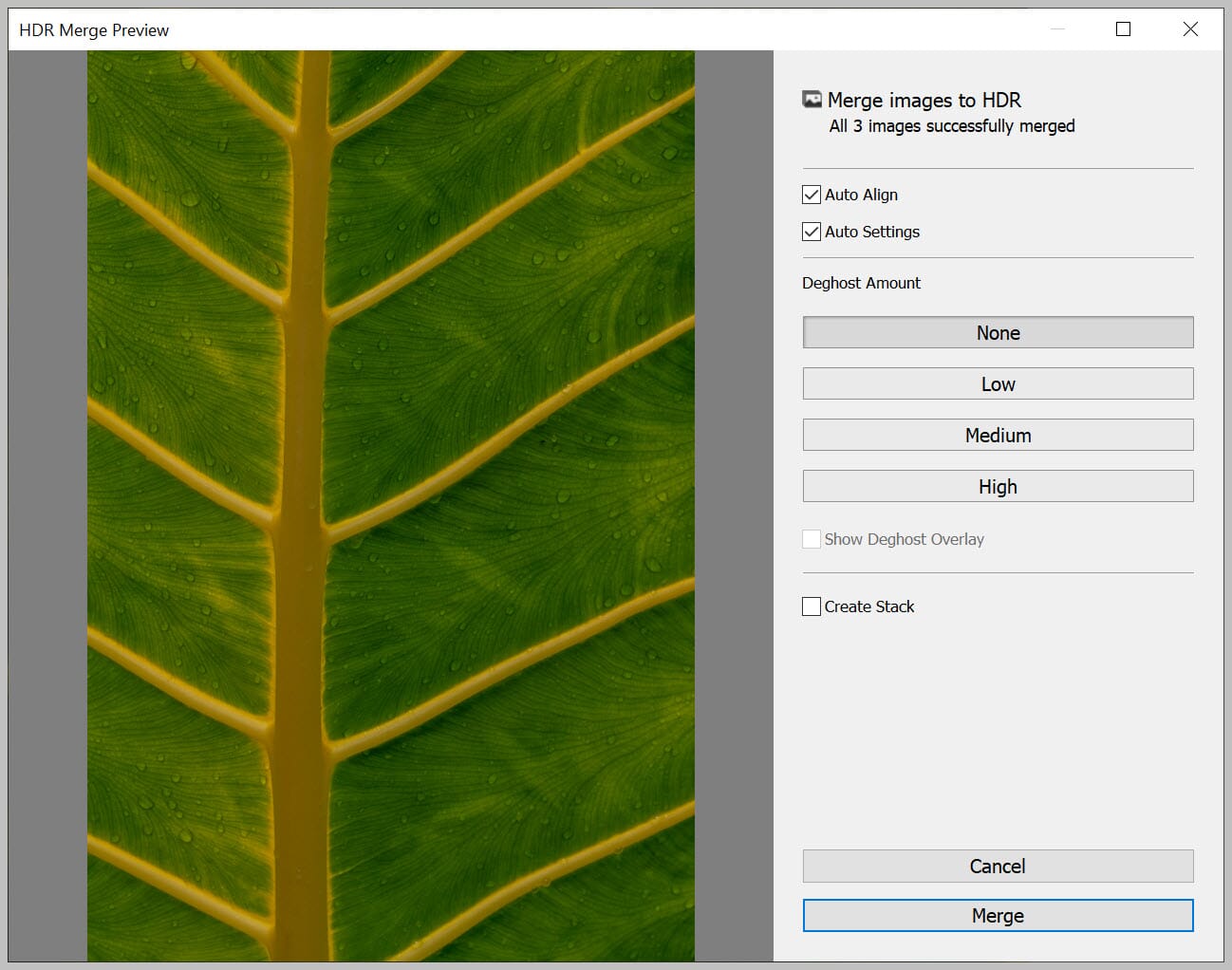
I’d recommend selecting Auto Align (this will line up the photos to account for any slight shift between frames).
As for the Auto Settings and Deghost Amount, the choice is yours. I usually leave Auto Settings unchecked and I start with a Deghost Amount of None – but I’d recommend experimenting with different options and seeing what works for your particular image.
Finally, click Merge…
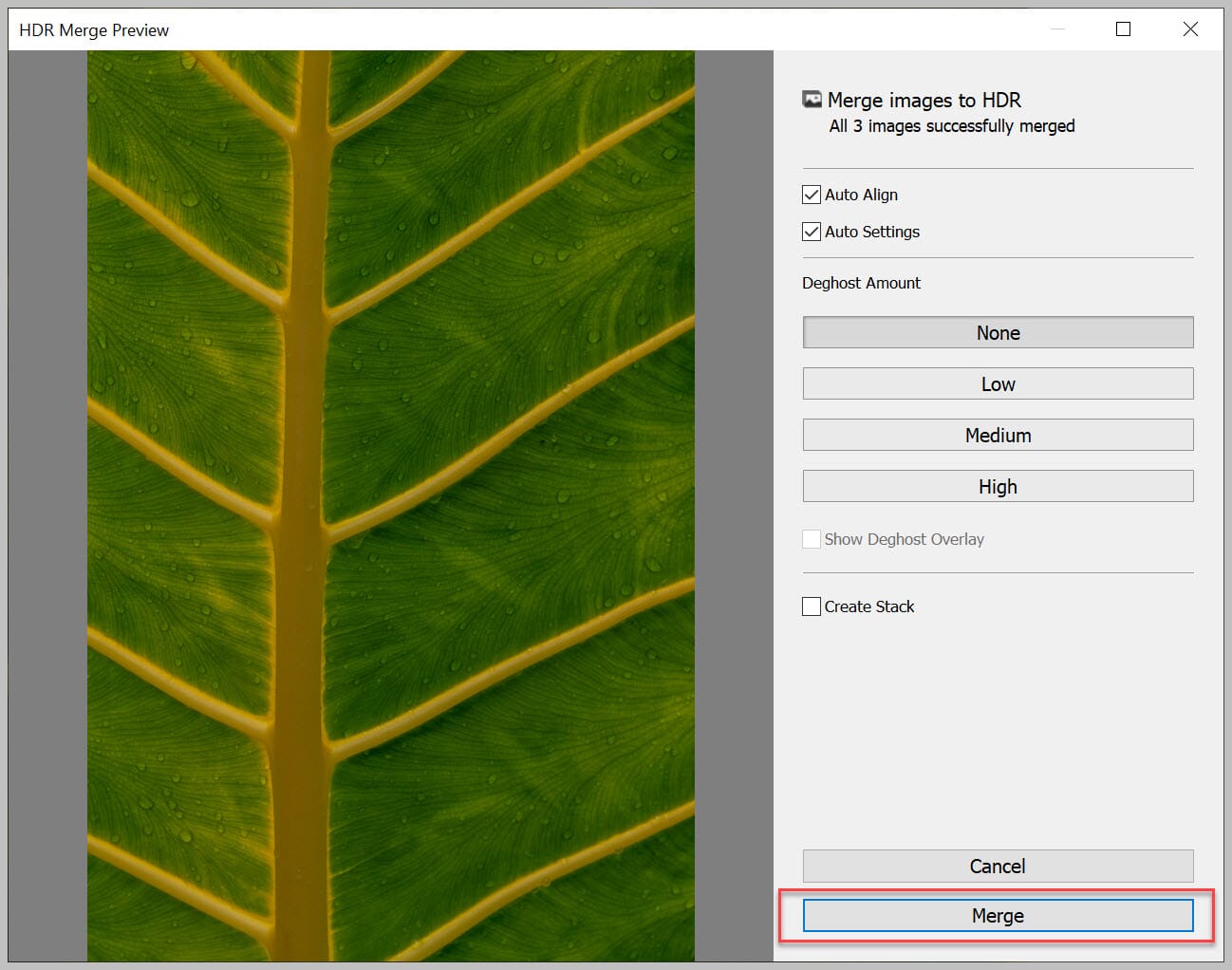
…and watch as your night HDR photo comes to life!
Note that, at this point, you’ll want to edit your merged photo in Lightroom the way you normally approach an image file. Adjust the exposure, boost the contrast, experiment with different colors and split toning, that kind of thing.
Just have fun with it!
11. Create Advanced HDR Night Looks With Aurora HDR, Photomatix, and More
If you’ve done some basic HDR night photography but you want to take your post-processing to the next level…
Or if you’re looking to do more advanced HDR editing techniques with long exposure images, light trails, or selective blending…
Then a program like Lightroom won’t be enough.
Instead, you’ll want to invest in a dedicated HDR editor.
Personally, I’m a fan of Aurora HDR, which offers lots of cool HDR effects. You can quickly use it to make your photos look incredible (though be careful – sometimes it’s a little too powerful, and you end up with a very grungy, garish look!).
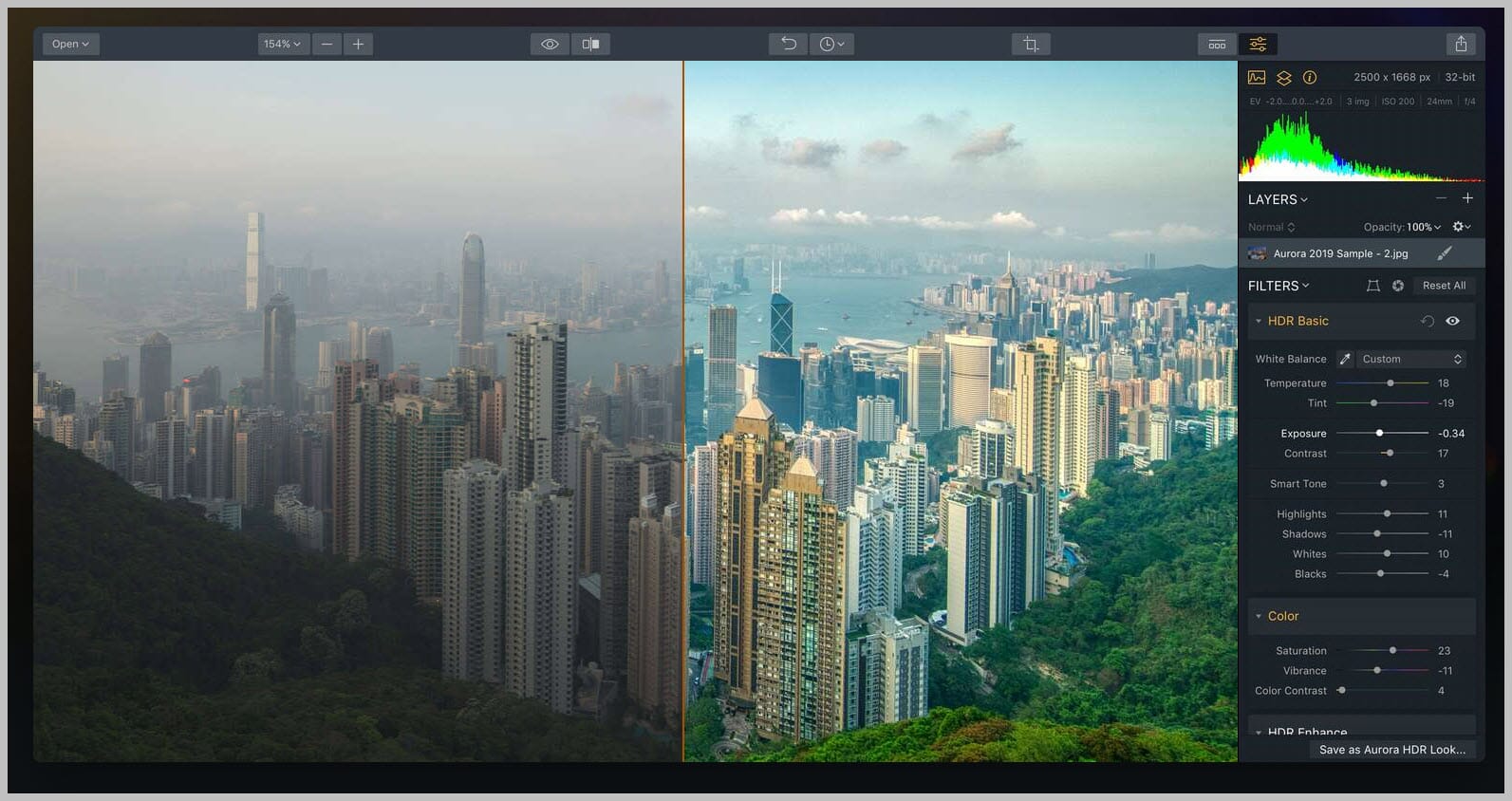
Photomatix is another program that gives you more control over your HDR edits. It’s not quite as artistically-minded as Aurora HDR, but it’s certainly an option worth looking into.
Related Posts
I’d also recommend learning the ins-and-outs of Photoshop masking – including luminosity masking – if you haven’t already.
Masking will allow you to work on your set of bracketed photos, and carefully blend in part of one photo with parts of another. For instance, you might take a beautiful long-exposure sky from one photo and combine it with the foreground from another. Or you could take the light trails from one photo and add them to your already-merged HDR shot.
Note that you can mix and match shots in Photoshop. You can manually merge files for an HDR image, or you can use merging software, then selectively add back in pieces from the original bracketed images.
It’s insanely powerful, and certainly something worth exploring – especially if you want to take your HDR night photography to the level of the pros.
HDR Night Photography: Final Words
Now that you’ve finished this article, you know all about night HDR photos – and you’re 100% ready to take some stunning shots of your own.
So grab your camera, a tripod, and a remote release.
Then go have some fun at night!
I guarantee you’ll love the results.
Is it good to use HDR techniques at night?
Yes, HDR techniques are very helpful for night photography. They’ll help you maintain detail in ultra-bright light sources, such as streetlights, while also maintaining detail in ultra-dark shadows.
Do I need a tripod for HDR photography?
You don’t absolutely need a tripod for HDR photography, but it’s a very good idea. Otherwise, your images will get out of alignment and cause a lot of post-processing frustration. If you don’t have a tripod, you can try putting your camera on a sturdy object, such as a table or the ground.
Are HDR pictures better?
That depends on the look you’re after! Certainly, HDR photos capture more detail . So you’ll get better highlight detail and better shadow detail. But whether you know how to use the detail – or whether you even want to use the detail – is another question.
What mode is best for HDR night photography?
I’d recommend using your camera’s Manual mode or Aperture Priority mode; that way, you have complete control over your settings for bracketing.
How much should I bracket for an HDR image?
Generally, creating three bracketed shots is fine. But for images with a lot of contrast – a bright streetlight and dark shadows, for example – it pays to bracket more broadly, taking five or even seven images.
